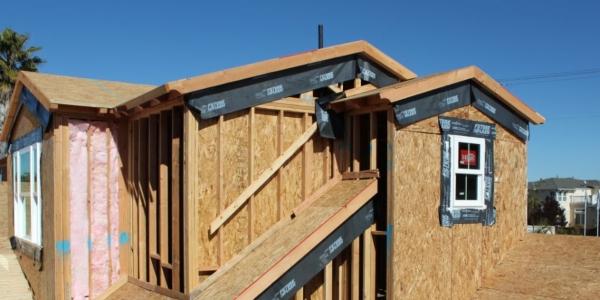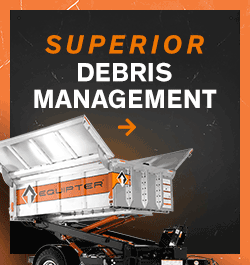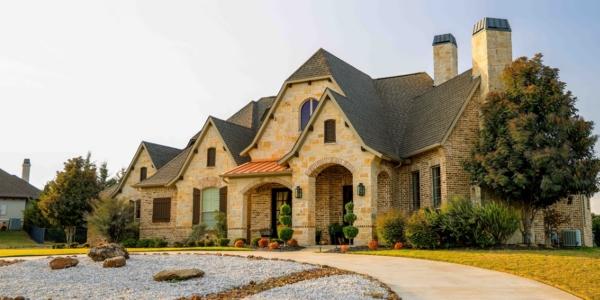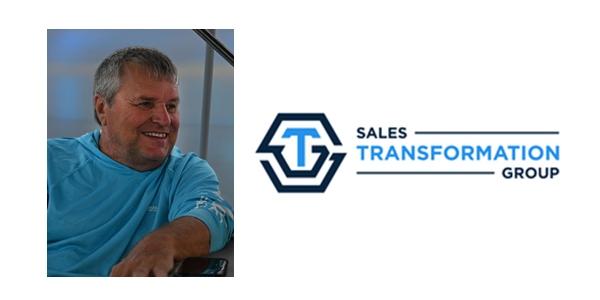El Niño Results in New Waterproofing Product

By MFM Building Products.
Learn about the history of FutureFlash®, a 25-mil, mechanically attached waterproofing membrane that can self-seal around construction fasteners for a waterproof bond.
The origins of FutureFlash®, a mechanically attached waterproofing membrane, can be traced back to a number of what seemed as unrelated events more than four decades ago, and a bright California sales representative who got a great idea.
The first event was wide sweeping legislation across the country in prohibiting the use of asbestos in building products. During the mid-1970s, the use of asbestos as an additive in cement and stucco products were being banned throughout the United States. This had a dramatic effect on the physical properties of these products at the time.
The second event was the environmental phenomenon known as El Niño, in particular, the one that started in 1997 and lasted into the early 2000s. The El Niño of 1997-1998 alone drenched California with more than 31 inches of rain that resulted in not only the closing of highways, power outages and mudslides, but it took a severe toll on residential and commercial buildings.
The cement and stucco used in these facilities were no match for the severe rainfall which in turn, caused massive fastener intrusion failures around window and door frames. Basically, any structure built after 1976 had a high potential for failure due the asbestos mandates and the massive volume of rain.
At that time, window and door flashings were mechanically attached, siliconized paper membranes, clearly no match for the extreme moisture during the El Niño period. The result was a widespread increase in the formation of Stachybotrys Chartarum, or more commonly known as toxic or black mold. As one stucco installer noted, “They’re wasn’t enough lawyers in California to represent all the construction defects at the time.”
The right idea at the right time
During this period, Gary Messenger, Founder of No Leaks, Inc., was an independent sales representative selling to the stucco marketplace. It was here that Gary become aware of the black mold problem and the fragility of siliconized paper as an effective waterproofing barrier. Self-adhering bituminous rubberized asphalt products were just being introduced into the California marketplace as a result of the construction defects.
It was then that an idea came to mind. Gary began outlining the criteria that he envisioned would be the ideal flashing product that could withstand extreme moisture conditions without failing. He then contacted MFM Building Products, one of the companies that Gary represented.
MFM, founded in 1961 in Coshocton, Ohio, is a manufacturing company with a rich history of producing self-adhesive, exterior waterproofing membranes. Following Gary’s specifications, MFM began the research and development process to create a mechanically-attached product to solve the problem.
FutureFlash is created
The end result of MFM’s product development was FutureFlash, a 25-mil, mechanically-attached waterproofing membrane. FutureFlash® is constructed of two high-performance films with a core of rubberized asphalt sandwiched between them. The outer polyethylene film is tough and resistant to tear, whereas the inner polyester film adds dimensional stability. The bituminous rubberized asphalt (SBS) core allows the membrane to self-seal around construction fasteners for a waterproof bond.
FutureFlash is designed especially for stucco walls where substantial through-wall movement of moisture is expected, and maximum waterproofing is essential. The membrane is also suitable for use under all siding materials, to strip in flanges of wood, metal and vinyl windows or a prelining at all metal transitions, among other applications.
The major benefit of FutureFlash is that the membrane will not trap moisture. If effectively seals and prohibits entrapping water within wall cavities to prevent wood rot and warping. Its unique “weep” characteristics let the structure breath, and moisture to drain away from the wall cavity discouraging the occurrence of potentially hazardous, toxic mold.
Since FutureFlash is mechanically-attached, items like asphalt-saturated kraft building paper, housewraps, lathe and wire can be tucked under the membrane. This allows FutureFlash to be installed prior to these other materials, as well as the membrane repositioned, if needed.
FutureFlash® Sealant™
An integral part of the success of FutureFlash is the use of FutureFlash® Sealant™ as a two-part waterproofing system. FutureFlash Sealant is a specially formulated polyurethane caulk suitable for a wide variety of surfaces to deliver superior attachment characteristics across a wider temperature range compared to butyl or asphalt-sealants. The FutureFlash 10-year warranty only applies when using FutureFlash Sealant during installation.
Patented technology
Gary Messenger filed an application for FutureFlash® with the U.S. Patent Office. The Patent Office noted, “FutureFlash® has the outstanding advantage of a non-adhesive laminate and ease of installation…,” and was subsequently awarded U.S. Patent No. 6,103,356.
Product testing followed to ensure the performance of FutureFlash® to industry standards. The first testing was completed by Fenestration Testing Laboratory, Inc. to Uniform Building Code Section #1 707(b). The result was, “The FutureFlash® System performs well as a window flashing even under the most exaggerated conditions.”
FutureFlash® also was evaluated by the International Code Council (ICC) to be in accordance with ICC-ES Acceptance Criteria for Flexible Flashing Membranes (AC148), Report ICC-ES ESR-2783.
Significant savings
Today, a large group of West Coast builders are taking advantage of FutureFlash®. Using FutureFlash® eliminates the need for costly plastic prefabricated corners or other systems fabricated out of sheet metal or vinyl. The system also significantly reduces the number of installation steps needed per each window from 30 down to 8 to 12. As Gary stated, “We have not yet experienced a failure in more than 25 years, while saving the builder money.”
As one builder noted, “I anticipated spending three days to install the windows on an apartment complex. By using FutureFlash®, the job was completed in one day – now that is significant savings!”
In summary
“Necessity is the mother of invention definition. A need or problem encourages creative efforts to meet the need or solve the problem.” This saying appears in the dialogue Republic, by the ancient Greek philosopher Plato.
Gary Messenger and MFM Building Products may not be as famous as Plato, but by working together, a new product was developed that is still being used extensively by the stucco trade and window installers today.
Learn more about MFM Building Products Corp. in their Coffee Shop Directory or visit www.mfmbp.com.






















Comments
Leave a Reply
Have an account? Login to leave a comment!
Sign In